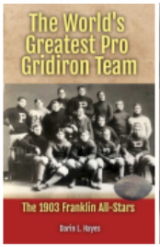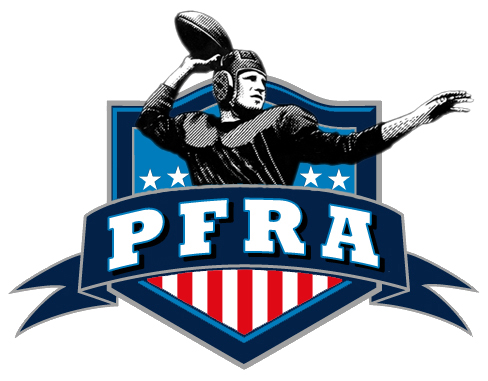Results 121 thru 130 of 191 for "Helmet History"
Go To Page: 1 . . . . 9 10 11 12 13 14 15 16 17 . . . . 20New Mexico Lobos Helmet Design History
The New Mexico State Lobos have worn a variety of helmet designs throughout their football history. Characterized by a bold and distinctive look, the Lobos helmet has undergone several transformations while maintaining its core identity. Early helmets were likely simple with basic colors and perhaps a small logo. As the sport evolved, so too did the Lobos' headgear, incorporating more intricate designs and advanced technology.
In recent years, the Lobos have experimented with different helmet styles to create a modern and eye-catching appearance. While the program has maintained a strong connection to its heritage, the desire to stand out on the field has led to innovative helmet designs. These changes reflect the evolving nature of college football and the Lobos' commitment to visual identity.
In recent years, the Lobos have experimented with different helmet styles to create a modern and eye-catching appearance. While the program has maintained a strong connection to its heritage, the desire to stand out on the field has led to innovative helmet designs. These changes reflect the evolving nature of college football and the Lobos' commitment to visual identity.
North Carolina Tar Heels Helmet Design History
The North Carolina Tar Heels football program has a rich history, and its helmet design has evolved alongside it.
Initially, helmets were basic, offering little protection. As the game grew more physical, so too did the equipment. The Tar Heels adopted the classic college football look of a solid-colored helmet, opting for Carolina blue.
Over the years, the Tar Heel helmet has undergone subtle changes. Stripes were added, removed, and altered, and the shade of blue has varied slightly. The iconic interlocking NC logo has remained a constant, a symbol of the program's identity. While the helmet has seen its share of updates, the core elements of Carolina blue and the interlocking NC have remained steadfast, creating a timeless look that resonates with fans.
Initially, helmets were basic, offering little protection. As the game grew more physical, so too did the equipment. The Tar Heels adopted the classic college football look of a solid-colored helmet, opting for Carolina blue.
Over the years, the Tar Heel helmet has undergone subtle changes. Stripes were added, removed, and altered, and the shade of blue has varied slightly. The iconic interlocking NC logo has remained a constant, a symbol of the program's identity. While the helmet has seen its share of updates, the core elements of Carolina blue and the interlocking NC have remained steadfast, creating a timeless look that resonates with fans.
Northern Illinois Huskies Helmet Design History
The Evolving Look of the Northern Illinois Huskies Helmet
The Northern Illinois Huskies football helmet has undergone several transformations throughout the years, reflecting the evolving identity of the program. Initially, the helmet design was simpler, featuring a solid color with a basic logo. Over time, the Huskies incorporated more intricate details, such as stripes and alternate color combinations. A significant shift occurred when the team adopted a black helmet with a bold husky head logo, a design that became synonymous with the program's rise to prominence.
While the core elements of the helmet have remained consistent, subtle changes in color schemes and logo variations have continued to evolve, ensuring a fresh and modern look for the Huskies.
The Northern Illinois Huskies football helmet has undergone several transformations throughout the years, reflecting the evolving identity of the program. Initially, the helmet design was simpler, featuring a solid color with a basic logo. Over time, the Huskies incorporated more intricate details, such as stripes and alternate color combinations. A significant shift occurred when the team adopted a black helmet with a bold husky head logo, a design that became synonymous with the program's rise to prominence.
While the core elements of the helmet have remained consistent, subtle changes in color schemes and logo variations have continued to evolve, ensuring a fresh and modern look for the Huskies.
Western Michigan Broncos Helmet Design History
The Western Michigan Broncos football helmet has undergone several transformations over the years, reflecting the evolving identity of the program. Early designs were simple, often featuring a basic Bronco logo. As the program gained prominence, the helmet became a canvas for more intricate graphics and color combinations.
More recently, the Broncos have experimented with different helmet styles to create a modern and dynamic look. While maintaining the core elements of the Bronco identity, the team has introduced variations in colors, logos, and even helmet shells. This evolution not only reflects the changing trends in college football but also serves to invigorate fan enthusiasm and create a distinctive on-field presence for the Western Michigan Broncos.
More recently, the Broncos have experimented with different helmet styles to create a modern and dynamic look. While maintaining the core elements of the Bronco identity, the team has introduced variations in colors, logos, and even helmet shells. This evolution not only reflects the changing trends in college football but also serves to invigorate fan enthusiasm and create a distinctive on-field presence for the Western Michigan Broncos.
Utah State Aggies Helmet Design History
The Utah State Aggies football program has seen its fair share of helmet transformations over the years. While the core elements of Aggie blue and white have remained consistent, the specific designs have evolved with the times. Early helmets were simple, often featuring just a stripe or a basic logo. As the sport and design technology advanced, so too did the Aggies' headgear.
More recent years have seen a greater emphasis on bold and distinctive looks. The team has experimented with different shades of blue, various helmet stripes, and alternate logos. While tradition is important, the Aggies have shown a willingness to embrace modern design trends to create a helmet that is both visually appealing and representative of the program's identity.
More recent years have seen a greater emphasis on bold and distinctive looks. The team has experimented with different shades of blue, various helmet stripes, and alternate logos. While tradition is important, the Aggies have shown a willingness to embrace modern design trends to create a helmet that is both visually appealing and representative of the program's identity.
Ball State Cardinals Helmet Design History
The Ball State Cardinals football helmet has undergone a relatively modest evolution compared to many programs. For decades, the iconic white helmet with the cardinal head logo was the team's staple.
This traditional design has remained a constant, representing the program's history and identity.
In recent years, Ball State has experimented with variations on their classic look. The introduction of black helmets and special edition designs for specific games has added a modern flair while maintaining the core elements of the team's visual identity. While the helmet's overall design has remained consistent, these subtle changes have helped the Cardinals stay relevant in the ever-evolving world of college football aesthetics.
This traditional design has remained a constant, representing the program's history and identity.
In recent years, Ball State has experimented with variations on their classic look. The introduction of black helmets and special edition designs for specific games has added a modern flair while maintaining the core elements of the team's visual identity. While the helmet's overall design has remained consistent, these subtle changes have helped the Cardinals stay relevant in the ever-evolving world of college football aesthetics.
Nevada Wolf Pack Helmet Design History
The Nevada Wolf Pack football program has undergone several helmet design changes over the years. The most consistent element has been the incorporation of the team's signature silver and blue colors. Early helmets were simple, often featuring a basic stripe or logo against a solid color background.
As the sport and design technology evolved, so too did the Wolf Pack's headgear. More recent years have seen a shift towards bolder and more dynamic helmet designs. The team has experimented with different shades of blue, various helmet stripes, and alternate logos. While tradition remains important, Nevada has shown a willingness to embrace modern design trends to create a helmet that is both visually striking and representative of the program's identity.
As the sport and design technology evolved, so too did the Wolf Pack's headgear. More recent years have seen a shift towards bolder and more dynamic helmet designs. The team has experimented with different shades of blue, various helmet stripes, and alternate logos. While tradition remains important, Nevada has shown a willingness to embrace modern design trends to create a helmet that is both visually striking and representative of the program's identity.
Bowling Green Falcons Helmet Design History
The Bowling Green Falcons have undergone several helmet design changes throughout their history, reflecting the evolving trends in college football. Early helmets were likely simple, featuring basic colors and minimal graphics. As the sport gained popularity, so too did helmet design complexity. The Falcons have experimented with various color combinations, stripe patterns, and logos.
More recently, the team has incorporated modern technology and aesthetics into their helmets, often featuring sleek designs and advanced materials. While maintaining the core elements of their identity, Bowling Green has demonstrated a willingness to adapt their helmet design to stay current with the visual landscape of college football.
More recently, the team has incorporated modern technology and aesthetics into their helmets, often featuring sleek designs and advanced materials. While maintaining the core elements of their identity, Bowling Green has demonstrated a willingness to adapt their helmet design to stay current with the visual landscape of college football.
Toledo Rockets Helmet Design History
The Toledo Rockets football helmet has undergone a series of transformations over the years, reflecting the evolving tastes and trends in college football. While maintaining the core elements of the team's identity, the helmet design has adapted to incorporate modern aesthetics and safety regulations. Early iterations likely featured simpler designs with basic striping, gradually evolving into more complex patterns and color schemes.
The integration of advanced technology has also influenced helmet design, with improvements in material, ventilation, and protection becoming paramount. Through these changes, the Toledo Rockets helmet has become an iconic symbol of the program, representing its history and aspirations.
The integration of advanced technology has also influenced helmet design, with improvements in material, ventilation, and protection becoming paramount. Through these changes, the Toledo Rockets helmet has become an iconic symbol of the program, representing its history and aspirations.
The First Plastic Helmets and 1940 Northwestern @ Syracuse
Those who designed, produced, and mailed the ticket brochure touting Syracuse’s 1940 game with Northwestern had no idea the game would be a watershed moment in football equipment history. Syracuse opened their season the previous week, downing Clarkson 33-0, but the matchup was Northwestern’s first, and that made all the difference. — www.footballarchaeology.com
Football Archaeology takes a snap shot look at the first time plastic helmets were introduced to live football games, and a bit on their creator, John Riddell.
The year 1940 marked a significant milestone in the evolution of American football, particularly with the Northwestern Wildcats facing off against the Syracuse Orangemen in a historic game that would forever change the sport. What set this matchup apart wasn't just the clash between two formidable teams, but the introduction of a revolutionary innovation: plastic helmets. This game, held on October 5th, became the first-ever instance in college football where both competing teams donned these newly developed protective headgear.
Prior to the adoption of plastic helmets, football players relied on leather headgear that offered limited protection against the physical rigors of the game. The innovation of plastic helmets, however, represented a leap forward in player safety and comfort. Spearheaded by Riddell, the company responsible for this groundbreaking advancement, the plastic helmets featured a hard outer shell that provided better impact absorption and reduced the risk of head injuries.
In the context of the 1940 Northwestern at Syracuse game, the debut of plastic helmets symbolized more than just a technological upgrade. It underscored a growing awareness within the football community about the importance of player safety—a theme that continues to resonate in today's game. The decision by both teams to embrace this new equipment reflected a proactive approach to protecting their athletes, setting a precedent that would eventually become standard across all levels of football.
Moreover, the game itself was a testament to the competitive spirit and evolving strategies within college football. Northwestern, under the guidance of head coach Pappy Waldorf, brought a disciplined and dynamic offense to the field, while Syracuse, led by head coach Ossie Solem, countered with their own aggressive defensive tactics. The combination of innovative helmets and strategic gameplay made the 1940 matchup not only a pivotal moment in football history but also a captivating spectacle for fans and players alike.
Beyond its immediate impact, the introduction of plastic helmets in the 1940 Northwestern-Syracuse game foreshadowed the ongoing evolution of football equipment and safety standards. It highlighted the sport's capacity for adaptation and improvement, emphasizing the continuous efforts to enhance player welfare while preserving the essence of competitive athletics.
In conclusion, the 1940 Northwestern at Syracuse football game stands as a landmark event where innovation met tradition, ushering in a new era of safety and performance in American football. By embracing plastic helmets for the first time, both teams not only safeguarded their players but also paved the way for future advancements that would shape the game we know and love today.
Love the helmet designs and evolution wait till you check out the College Football helmet history of schools.
-Frequently Asked Questions
-Who was the first player to wear a football helmet? We have your answer in our in-depth study ofthe first to wear a helmet.
-What is the history of each college team and their helmet designs? Check out many of them with our series College Football helmet history of schools.
-How come some teams have player numbers on their helmets? We asked this question too and had a college football expert historian help divulge helmet numbers history.
-Why do some teams like Michigan and Delaware look so odd and similar? It's really uncanny isn't it that the Wolverines and Blue Hens look the same, check this out for a reason when helmets had wings.
-What do stickers on college football helmets mean? Some of them look really crazy but there is some goos reason for the extra adornments and we have the scoop Why all the stickers on some football helmets?.
When did football helmets change from leather to plastic? Just after World War II saw the most abrupt changes, we have more in this in our chat with an expert:When helmets changed from leather to plastic.
Results 121 thru 130 of 191 for "Helmet History"
Go To Page: 1 . . . . 9 10 11 12 13 14 15 16 17 . . . . 20Related Titles
DARTMOUTH BIG GREEN, A HISTORY HARD HATTED, AKRON ZIPS, APPALACHIAN STATE MOUNTAINEERS, COLORADO STATE RAM, COLUMBIA LIONS, CORNELL BIG RED, FROM DESERT SUN TO WILDCAT FURY, FROM HUMBLE ORANGE TO CHECKERED POWER, FROM POWDER BLUE TO NAVY AND BACK, GATORS GRIDIRON GEAR, INDIANA HOOSIERS, MISSOURI TIGERS HELMET DESIGN, TEMPLE OWLS, TEXAS A&M AGGIES, UTEP MINERS, A GOBBLING JOURNEY THROUGH TIME, FLORIDA ATLANTIC OWLS, FLORIDA INTERNATIONAL GOLDEN PANTHERS, FROM BASIC BEGINNINGS TO BOLD BIRDS, FROM GREEN LEATHER TO CHARGING GRIT, FROM PALMETTO TO SPURS UP, FROM SIMPLE STRIPES TO BIG RED FURY, FROM TERRAPIN SHELL TO FLYING TURTLE, GEORGIA BULLDOGS, ILLINI HELMETS, KENTUCKY WILDCATS, LSU TIGERS, MISSISSIPPI STATE BULLDOGS, OLD DOMINION MONARCHS, THROUGH GOLD, BLACK, AND STRIPES, TROY TROJANS, ARKANSAS STATE RED WOLVES, COASTAL CAROLINA CHANTICLEERS, GEORGIA SOUTHERN EAGLES, GEORGIA STATE PANTHERS, LOUISIANA RAGIN' CAJUNS, MARSHALL THUNDERING HERD, INFLATABLE AMBITIONS, FROM LEATHER LUGS TO HIGH-TECH HEADGEARRelated Categories
FOOTBALL HISTORY MINUTE VIDEOS, COLLEGE FOOTBALL PROGRAMS, COLLEGE FOOTBALL HELMET HISTORY, FOOTBALL ARCHAEOLOGY, COLLEGE FOOTBALL PROGRAMS SUN BELT TEAMS, COLLEGE FOOTBALL PROGRAMS PAST MAJOR SCHOOLS TEAMS, ABOUT SPORTS, FOOTBALL EQUIPMENT, FOOTBALL ODDS AND ENDS, FOOTBALL HISTORYRelated Searches
alternate, away jersey, block number, chin strap, draw string, face mask, helmet decal, home jersey, knee pad, Pride Sticker, altcategory:College HOF, altcategory:Football Legend, altcategory:Football Archaeology, Conference:SEC, altcategory:About Sports, Conference:Big 10, Conference:Big 12, ASU Sun Devils, Conference:PAC 12, Conference PAC 10, Tempe, sports:football, sports:college football, The Big House, altcategory:Football, Alabama Crimson Tide, college football history, Bear Bryant, Crimson Tide history, legendary coaches, Conference:Sun Belt, altcategory:College Football, altcategory:Coaches, football:equipment, altcategory:Football History, football:jersey history, Conference:The American, Conference:ACC, Conference:MAC, Blasie D'Sylva, football helmets, Podcast:Football Archaeology, Podcast:Football, sports:football equipment, sports:college Football, football, school:Vanderbilt University, Conference:Mountain West, stadium:Falcon Stadium, InfoCision Stadium, school:Troy University









